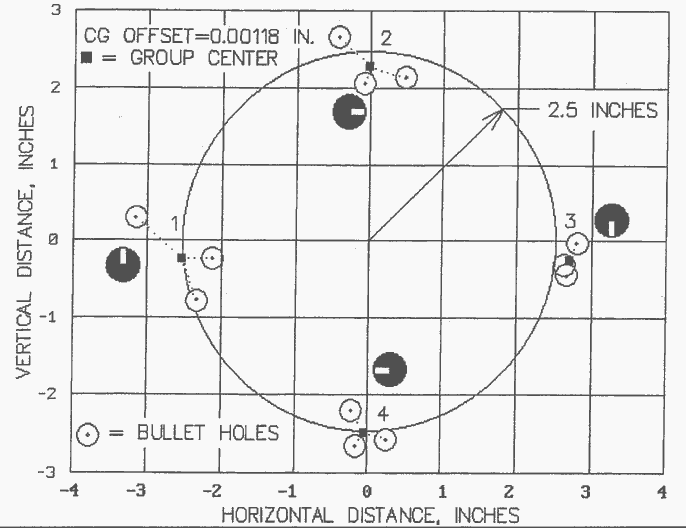longrangehunterII
Well-Known Member
Wow.... I'm not sure I want to step out in front of that debate. gun) But there is another benefit to using a faster twist in a .308 or any other caliber for that matter, gyroscopic stability.
The standard twist will show three to four times more loss in gyroscopic stability at 1,300 meters. Which is more then 200 m into subsonic flight, but the faster twist will also get better groups at shorter distance, but not at 100m. More twist in the barrel imparts more spin on the bullet, thus more gyroscopic stability is retained through supersonic and into subsonic flight. What is lost in subsonic flight is the loss of BC due to the loss of velocity and gyroscopic stability, which allows more oscillation, which is over come by more drag, and reduced loss of BC.
So if we spin the bullet faster to fight off the effects of transonic shock waves, either through velocity or spin, the bullet will retain more BC further downrange. This results in better groups and less hold at distance. I don't really fret to much about velocity or 100 m/yd. groups to much on big game rifles/tactical/match rifles because the bullet hasn't gone to sleep yet. That and I'm more interested in sheer accuracy at distance then velocity alone, gravity and its effects on bullet drop is a constant that is easy to measure for a given speed at which the bullet is traveling from the barrel.
Honestly any small loss or gain in velocity isn't going to matter downrange on a target/game animal. The effects on group size and the benefits that could make, is what I would consider for using a faster twist rate in a barrel for a given caliber. It's a known fact that under stabilization does have an effect on stability of a bullet. Whereas over stabilization is something I've always heard of, but never seen. I don't think you can over stabilize todays bullets in rifles used for medium-large caliber weapons. But don't jump down my throat if you think I'm wrong...... just put it out there for information, so we can keep these posts on a more civil playing ground.
The standard twist will show three to four times more loss in gyroscopic stability at 1,300 meters. Which is more then 200 m into subsonic flight, but the faster twist will also get better groups at shorter distance, but not at 100m. More twist in the barrel imparts more spin on the bullet, thus more gyroscopic stability is retained through supersonic and into subsonic flight. What is lost in subsonic flight is the loss of BC due to the loss of velocity and gyroscopic stability, which allows more oscillation, which is over come by more drag, and reduced loss of BC.
So if we spin the bullet faster to fight off the effects of transonic shock waves, either through velocity or spin, the bullet will retain more BC further downrange. This results in better groups and less hold at distance. I don't really fret to much about velocity or 100 m/yd. groups to much on big game rifles/tactical/match rifles because the bullet hasn't gone to sleep yet. That and I'm more interested in sheer accuracy at distance then velocity alone, gravity and its effects on bullet drop is a constant that is easy to measure for a given speed at which the bullet is traveling from the barrel.
Honestly any small loss or gain in velocity isn't going to matter downrange on a target/game animal. The effects on group size and the benefits that could make, is what I would consider for using a faster twist rate in a barrel for a given caliber. It's a known fact that under stabilization does have an effect on stability of a bullet. Whereas over stabilization is something I've always heard of, but never seen. I don't think you can over stabilize todays bullets in rifles used for medium-large caliber weapons. But don't jump down my throat if you think I'm wrong...... just put it out there for information, so we can keep these posts on a more civil playing ground.



